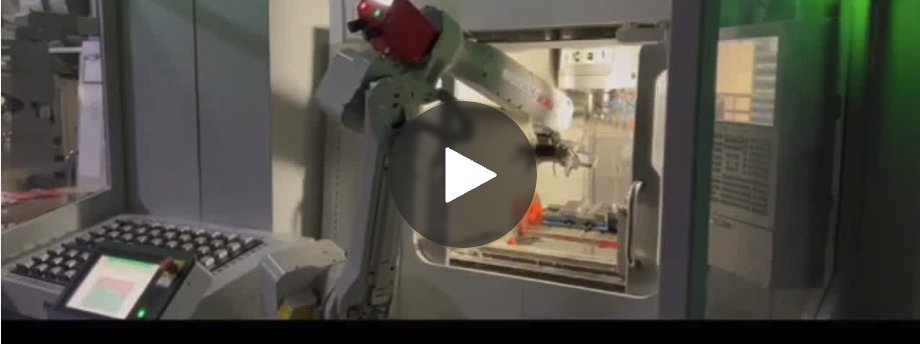
The Promising Future of CNC Machine-Tending Robots: The Evolution of Automation
The Promising Future of CNC Machine-Tending Robots: The Evolution of Automation
Over the past few decades, technological advancements have revolutionized industrial automation, increasing efficiency and productivity in various sectors.
One such area that has witnessed significant progress is that of computer numerical control (CNC) machine-tending robots. These intelligent and adaptable robots have streamlined manufacturing processes, promising a brighter future for industries worldwide.
In this blog post, we will explore the evolution and potential of CNC machine-tending robots, their benefits, and the exciting possibilities they offer.
- Increased Efficiency and Productivity:
CNC machine-tending robots have successfully integrated into manufacturing workflows, increasing efficiency and productivity levels. These robots are built to perform repetitive tasks with precision, speed, and consistency, eliminating the risk of human error. By automating the machine-tending process, manufacturers can reduce production time, achieve higher output, and improve overall operational efficiency.
2. Enhanced Safety and Workforce Collaboration:
Robots excel at performing physically demanding and hazardous tasks, allowing human workers to focus on more complex activities that require critical thinking and problem-solving skills. CNC machine-tending robots can work alongside human operators, promoting collaboration and minimizing safety risks in manufacturing environments.
This collaboration enables workers to contribute their expertise while automating mundane and repetitive tasks, leading to a more harmonious and efficient industrial ecosystem.
3. Flexibility and Adaptability:
The future of CNC machine-tending robots lies in their ability to adapt to changing production requirements. Modern robots are equipped with advanced sensors, artificial intelligence (AI), and machine learning algorithms, enabling them to understand complex environments and adjust their actions accordingly. These robots can quickly switch between different tasks or machines, allowing manufacturers to meet varying demands efficiently. The flexibility of CNC machine-tending robots paves the way for agile and responsive manufacturing systems, ready to tackle dynamic market demands.
4. Reduction in Costs:
Introducing CNC machine-tending robots into manufacturing processes can result in significant cost savings for companies. While the initial investment may seem substantial, the long-term benefits outweigh the costs. Robots operate continuously without fatigue, reducing labor costs associated with human workers.
By streamlining operations, reducing setup time, and minimizing errors, these robots enable manufacturers to optimize resource utilization and minimize material waste, further reducing operational costs.
5. Advancements in Artificial Intelligence and Robotics:
The future of CNC machine-tending robots is closely intertwined with advancements in artificial intelligence and robotics. Manufacturers are investing in developing intelligent algorithms and sophisticated sensors, allowing robots to perform complex tasks with greater accuracy. AI-powered solutions enable robots to learn and adapt, making them more capable of handling intricate machining processes. As machine learning algorithms become more refined, CNC machine-tending robots will become increasingly proficient at analyzing data, utilizing predictive maintenance, and generating valuable insights for process optimization.
6. Empowering Job Creation and Upskilling:
Contrary to popular belief, integrating CNC machine-tending robots does not lead to widespread job loss. Instead, it opens up new opportunities by reshaping the workforce landscape. The deployment of robots allows workers to transition into more meaningful roles where their creativity, problem-solving abilities, and emotional intelligence are highly valued.
As automation takes over repetitive and mundane tasks, companies can invest in upskilling their employees, ensuring they possess the necessary skills to take on higher-value roles within the organization. This transformation encourages lifelong learning and contributes to a more skilled and adaptable workforce.
Conclusion:
The future of CNC machine-tending robots is packed with potential, offering numerous benefits to manufacturing industries worldwide. Increased efficiency, enhanced safety, flexibility, cost savings, and advancements in AI and robotics all contribute to reshaping the way we view industrial automation. By embracing CNC machine-tending robots, manufacturers can optimize production processes, boost productivity, and remain competitive in a rapidly evolving landscape. As we witness the continued evolution of automation technology, it is clear that CNC machine-tending robots are at the forefront, driving innovation and revolutionizing the manufacturing industry.